A mix of colorful garden mums (chrysanthemums) blooming in late summer. Planting hardy mums in August lets them establish roots for a vibrant fall display. As summer winds down, don’t assume it’s too late to add new life to your flower beds. In fact, perennials to plant in August can reward you with spectacular late-season blooms and set the stage for next year’s growth. Many fall-blooming perennials actually thrive in the warm soils and longer days of late summer according to thespruce.com. August gardening is about working with the season’s heat: planting in the cooler evening hours and watering deeply to avoid transplant shock. By planting in late summer, you give these tough plants time to establish roots before frost while enjoying late summer flowers that transition beautifully into fall. Below are 10 of the best perennials to plant in August for a colorful fall garden.
Top 10 Perennials to Plant in August
Chrysanthemum (Hardy Mums) – A quintessential fall flower, hardy garden mums burst into bloom in early autumn. Planting chrysanthemums in August gives them time to root in before their big September-October show. Experts suggest buying mums in late summer as soon as they’re available (choose plants with tight buds for a longer display). Mums love full sun (with a bit of afternoon shade in hot climates) and regular water. Pinching back the tips until mid-summer helps them form bushy, bloom-covered plants. Come fall, these perennials will blanket your garden in gold, purple, rust, and white blossoms. Tip: After flowering, cut mums back and mulch over the roots to help them survive winter.
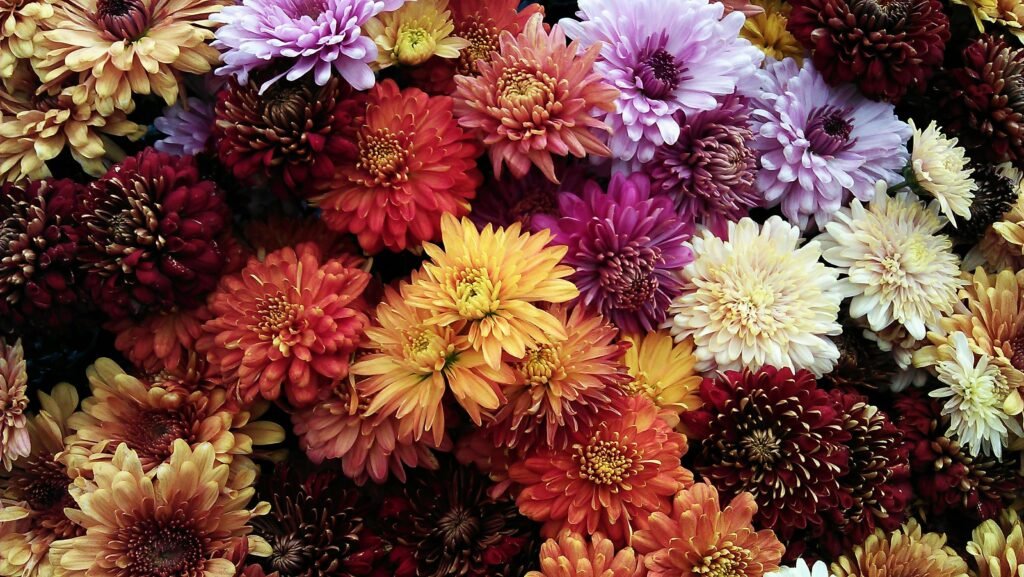

Asters – Asters bring cheerful daisy-like blooms in late summer and fall, when many other flowers have faded. Varieties like New England aster are fall-blooming perennials that can be planted in August to ensure a burst of purple, pink, or blue flowers in autumn. Asters thrive in full sun and cooler nights. Keep their soil evenly moist, as extreme heat and drought can cause wilting during the day. These native beauties are magnets for butterflies, providing late-season nectar. Plant asters in groups for a bold impact, and enjoy their color from late August until frost. Many cultivars are hardy in a wide range (zones 4–8), making them reliable late summer flowers for most U.S. gardens.
Sedum (‘Autumn Joy’ Stonecrop) – Sedums are succulents known for thriving on neglect, which makes them ideal for August planting. Autumn Joy sedum in particular is a star of the fall garden – its broccoli-like buds open into rosy pink clusters in late summer, aging to copper in fall and often remaining decorative into winter. This drought-tolerant perennial doesn’t mind the August heat at all. Just give it a sunny, well-drained spot and it will do the rest. The magenta-pink flowers of Autumn Joy sedum attract butterflies and honeybees, and even after blooming the rusty seed heads add winter interest. Planting sedum in late summer is easy since these plants are virtually indestructible and “plant it and forget it” tough.
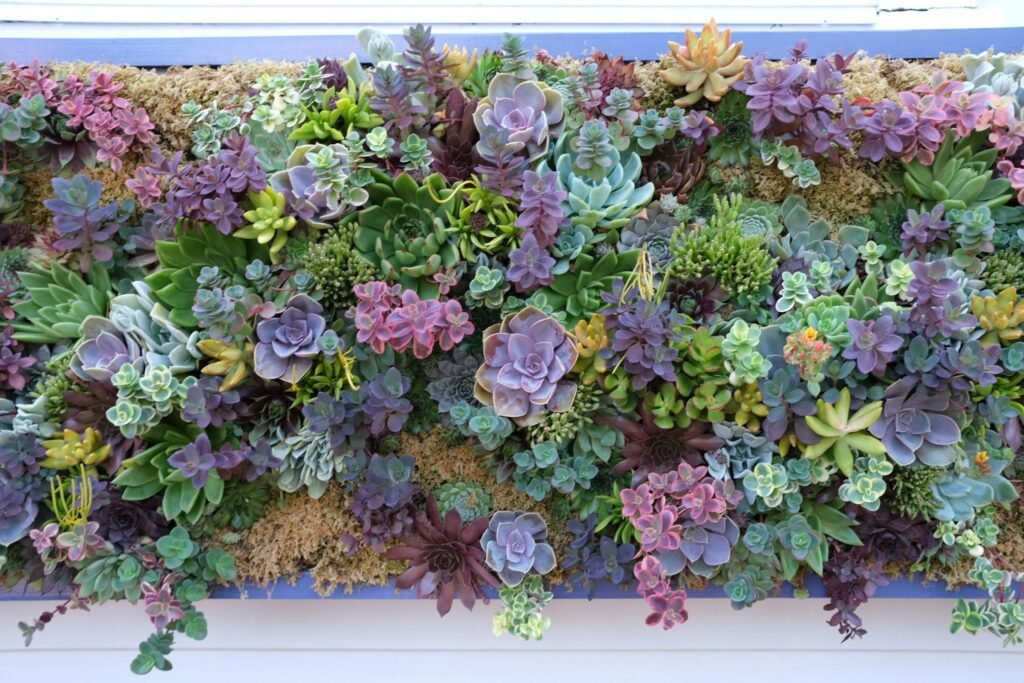

Japanese Anemone – Also called windflower, Japanese anemones are elegant perennials that bloom in late summer and into fall. Plant them in August and you’ll soon enjoy their delicate pink or white blossoms dancing on tall, graceful stems. Japanese anemones do best in rich, moist soil and partial to full sun (they can handle afternoon shade). They’re fairly low-maintenance once established and even resistant to deer and rabbits (an added bonus for wildlife-prone areas). Keep in mind these anemones spread by runners over time – plant them where they have room to form lovely colonies. Their blooms pair beautifully with mums and asters as part of an autumn floral display. Water well when planting, and mulch to keep roots cool.
Black-Eyed Susan (Rudbeckia) – Black-eyed Susans are classic late summer flowers with bright golden petals and dark “eyes” that bloom from mid-summer into fall. Planting them in August is still worthwhile – they establish quickly and are hardy in most regions (zones 3–9). Give Rudbeckia full sun and moderate water; they’ll tolerate heat well, but be sure to keep new transplants watered thoroughly. In fact, a newly planted black-eyed Susan will drink a lot of water at first, but once mature it becomes quite drought-resistant. These perennials are pollinator friendly, attracting butterflies by day and providing seed for birds in fall. Deadhead spent blooms to encourage continued flowering into autumn. By planting now, you ensure a sunny explosion of color that will return for years.
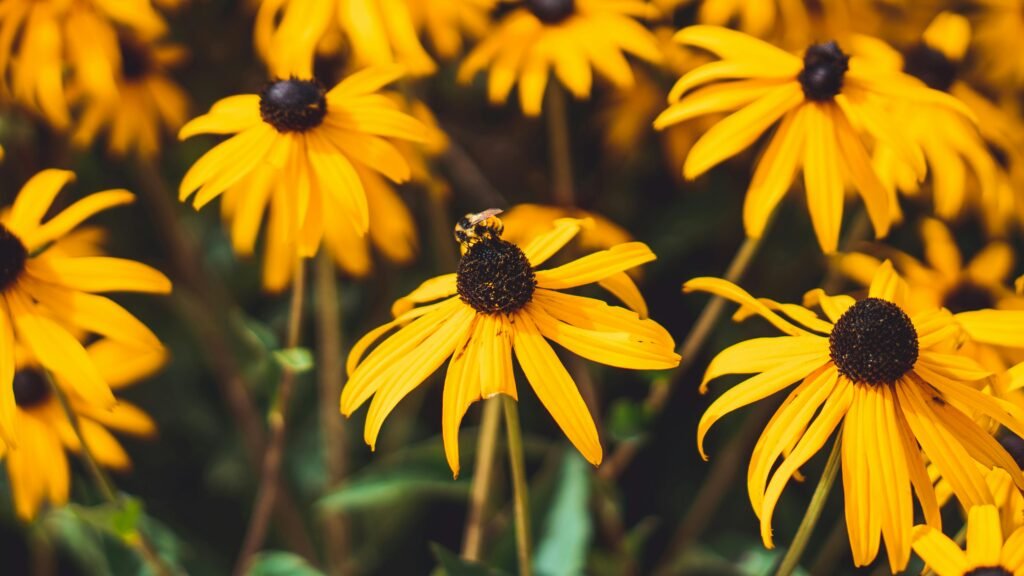
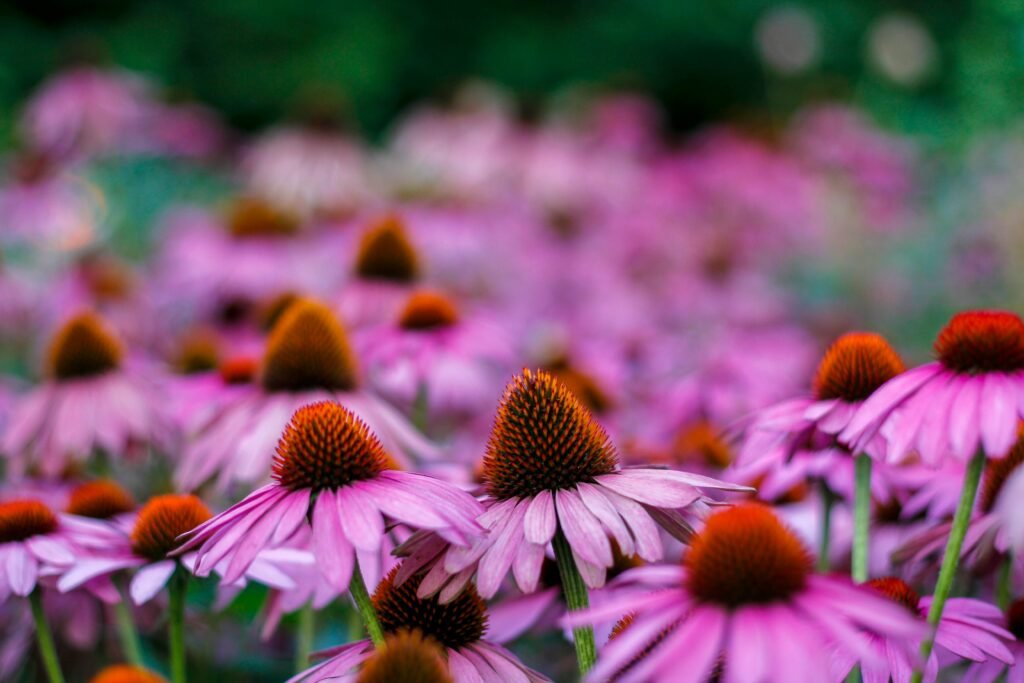
Purple Coneflower (Echinacea) – A native prairie perennial, purple coneflower is tough enough to plant even in the dog days of August. These daisy-like blooms (usually purple-pink) add bold color in late summer and can rebloom into early fall. Coneflowers love full sun and hot, dry conditions, so they won’t mind an August planting – just avoid boggy soil, as they dislike wet feet. Once in the ground, they’ll need regular water to get established, but afterwards they handle heat and occasional drought with ease. Echinacea is excellent for wildlife: butterflies flock to the nectar and songbirds (like goldfinches) feast on the seed heads later. Plant them in clusters for impact. By next summer, your coneflowers will be thriving, but even this fall you might enjoy a few blooms from late-season planting.
Helenium (Sneezeweed) – Helenium is a must-have for fall color, producing masses of daisy-like flowers in fiery shades of orange, red, and yellow. Despite the nickname “sneezeweed,” Helenium does not cause hay fever – it blooms at the same time as ragweed (the real allergen culprit), so it often gets blamed unfairly. This perennial loves full sun and is unfazed by summer heat and humidity, making it perfect for August planting. Helenium typically blooms in late summer through fall, providing an important nectar source for bees and butterflies when little else is flowering. Plant these 3-4 foot tall beauties in the back of borders for a stunning display of color. They prefer consistent moisture, so water well after planting and mulch to conserve soil moisture. Deer tend to leave Helenium alone, meaning your vibrant fall display will remain unbothered.
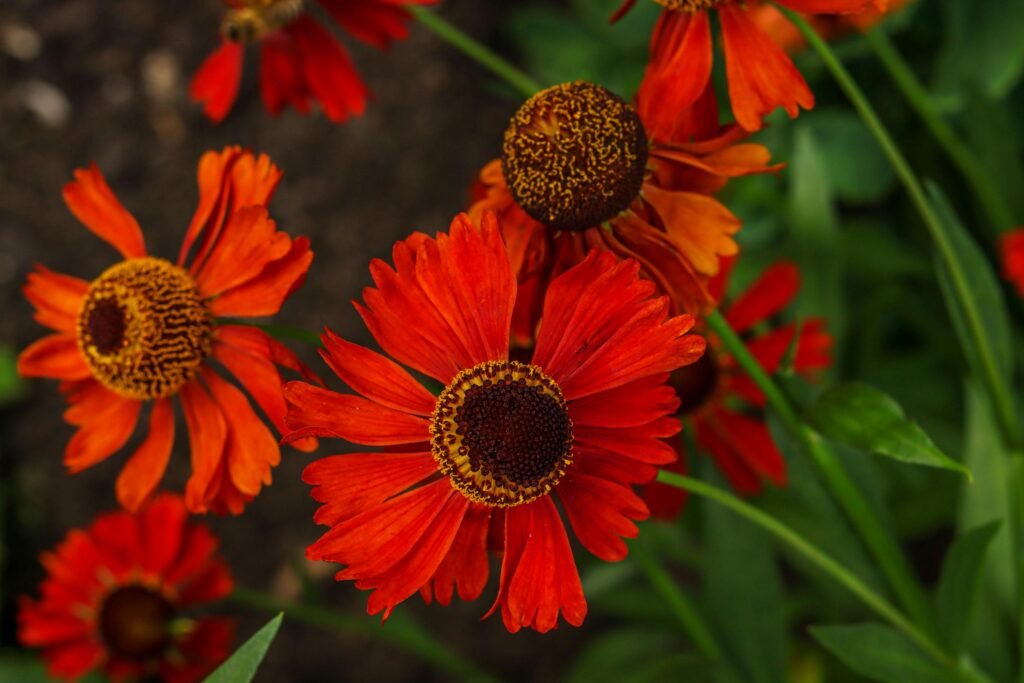
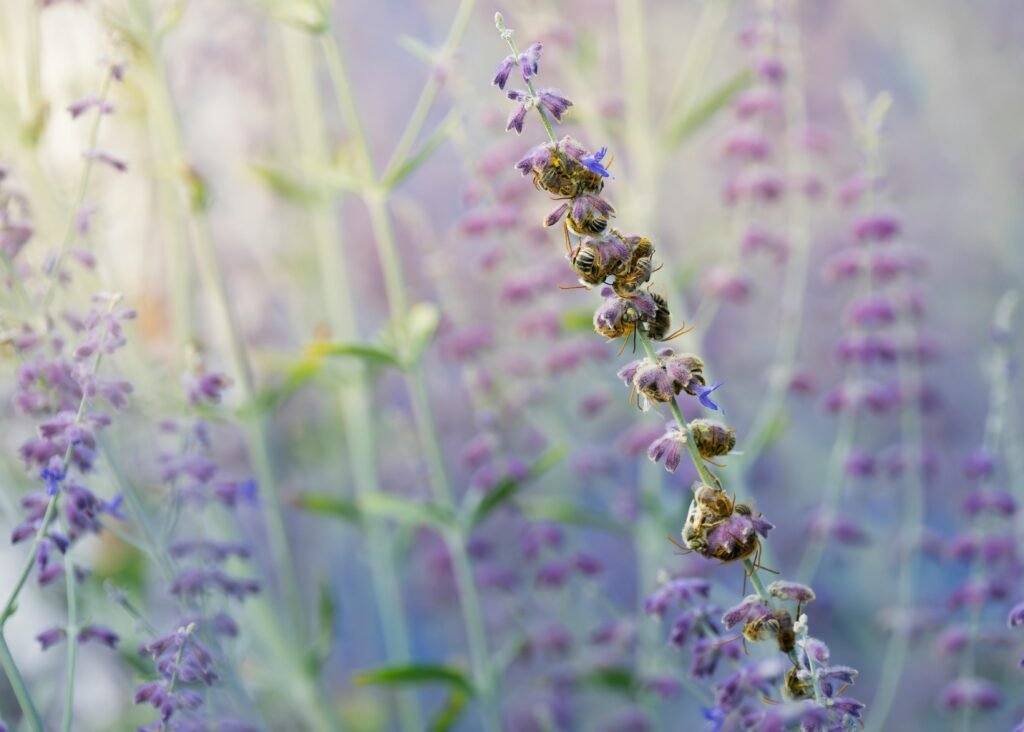
Russian Sage (Perovskia) – Russian sage is a woody perennial (or subshrub) that offers airy spires of lavender-purple flowers from midsummer into fall. It’s an ideal candidate for late-summer planting because it thrives in heat and dry conditions. In fact, if you have a dry August, Russian sage will hardly complain – it’s extremely drought-tolerant once established. Plant it in a spot with full sun and well-drained soil. Russian sage grows into an open, shrub-like form about 3–5 feet tall and wide, making a lovely hazy purple cloud in the garden. Be aware it’s in the mint family and can spread if you’re not careful, though not aggressively invasive. Its fragrant silver foliage also makes it deer-resistant. By planting in August, you ensure this hardy perennial has time to put down roots and come back strong next year with a summer-long flower show.
Coreopsis (Tickseed) – Coreopsis is a cheerful perennial that often blooms all summer and well into fall, especially if deadheaded. Many coreopsis varieties boast bright yellow, orange, or pink daisy-like flowers on wiry stems. Because they love warm weather and sunshine, you can add coreopsis to your garden in August without worry. These plants actually thrive in the 70–80°F temperature range common to late summer. Coreopsis is also fairly drought-tolerant and prefers drier, well-drained soil – perfect for late-summer conditions. Give new plantings a good soak and some compost, and they’ll reward you with weeks of color. Smaller varieties are great for edging and containers, while taller types fill out flower beds. Butterflies enjoy the blossoms, and the seed heads will attract birds later on. This hardy bloomer (many are perennial in zones 4–9) will come back next year even stronger, making it a smart late-season addition.
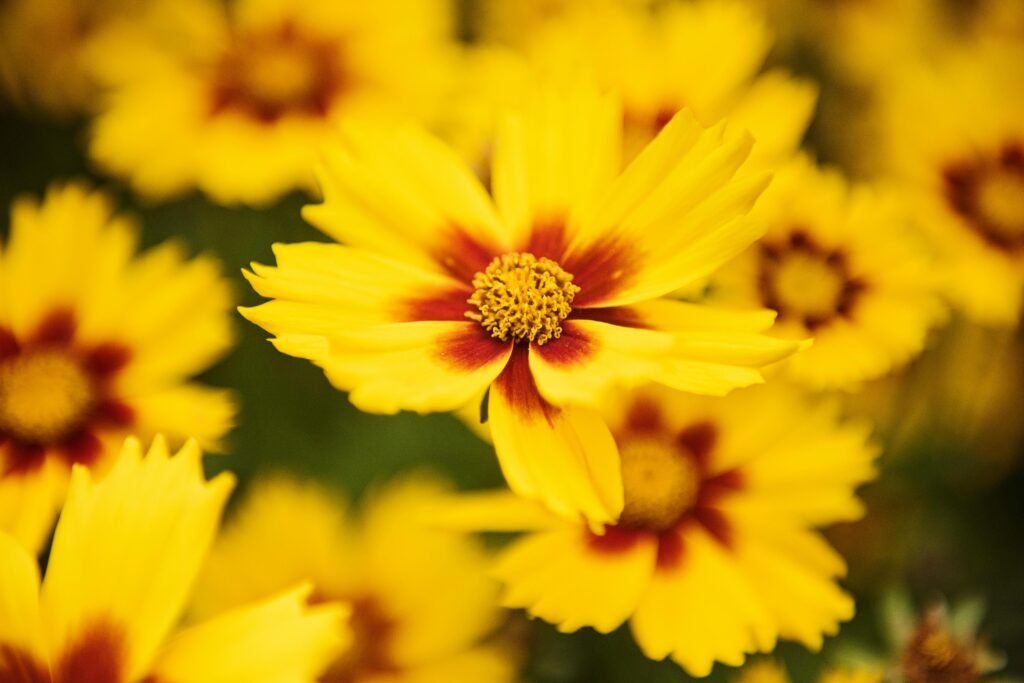
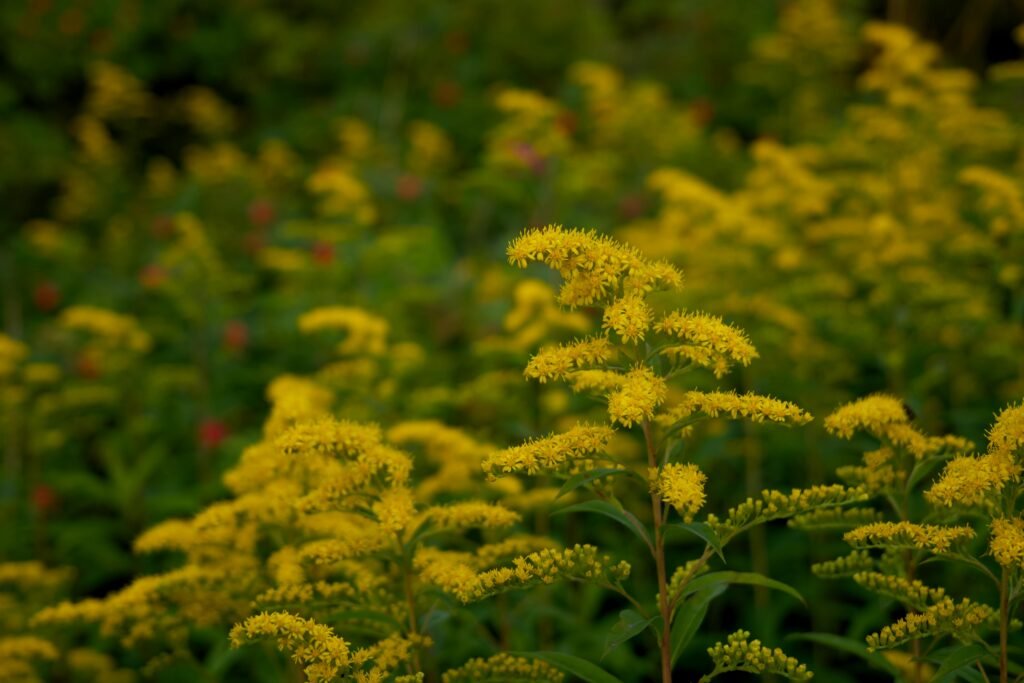
Goldenrod (Solidago) – Goldenrod is an easy-care native perennial that lights up the late summer landscape with plumes of golden-yellow flowers. Modern garden hybrids of goldenrod are more compact and floriferous than the wild roadside types, making them a fabulous choice for flower beds. Plant goldenrod in August and it will establish quickly—most varieties are hardy from zone 3 to 9 and tolerate heat, drought, and poor soil with ease. This plant is a boon for pollinators: butterflies and bees flock to its nectar-rich blooms in late summer and fall. And don’t worry about allergies; contrary to myth, goldenrod’s pollen is heavy and insect-carried (not airborne), so it doesn’t cause hay fever – ragweed is the true culprit blooming at the same time. Give goldenrod a sunny spot and average water, then enjoy its bursts of sunshine yellow that herald the coming fall.
Internal Tip: For more green-thumb inspiration, check out our guide on Indoor Plant Care Tips for healthy houseplants (and some cool plant gadgets for your home). This will help you keep your indoor and outdoor garden thriving year-round.
By adding these perennials to plant in August to your garden, you’ll extend your color display well into fall and set the stage for an even more spectacular spring. Remember to water new plantings deeply, mulch to conserve moisture, and avoid fertilizing this late in the season (a dose of compost is plenty to get them started). With the right care, your late-summer additions will establish quickly and come back stronger next year. Happy August gardening, and enjoy the vibrant transition from summer to autumn in your blooming backyard!
Don´t forget to check our Indoor Plant Care Tips and Top 5 Best Gadgets for Healthy Houseplants.
FAQ
Q: Is August too late to plant perennials?
A: Not at all! While spring is a popular planting time, August is still a great time to plant many perennials. The soil is warm, which encourages root growth, and there’s enough time for plants to establish before winter. You do need to pay extra attention to watering and avoid planting during extreme heat waves. Many fall-blooming perennials (like the ones listed above) actually prefer late-summer planting so they can bloom on schedule in fall. In all regions, try to get perennials in the ground at least 6–8 weeks before your first frost date so they can begin rooting in.
Q: How do I care for perennials planted in late summer?
A: Planting in late summer means you’ll need to be mindful of heat and hydration. It’s best to plant in the cooler late afternoon or evening and water deeply right after planting (this helps reduce transplant shock). Keep the soil consistently moist (but not waterlogged) for the first few weeks as roots get established – new transplants may need water daily during hot spells. Adding a layer of mulch around the plants can help retain moisture and keep roots cooler. Hold off on fertilizer when planting this late; a bit of compost mixed into the soil is gentler and provides nutrients without spurring weak late growth. You can resume light feeding in spring. Finally, continue to deadhead spent blooms on late-summer flowerers (like coreopsis or coneflower) to encourage any additional blooming and to direct the plant’s energy to root development.
Q: Will perennials planted in August bloom this year?
A: It depends on the plant and how far along it is when you put it in the ground. Many nursery perennials in August already have buds or blooms (e.g. garden mums or asters often show color), so those will certainly bloom in the fall if planted right away. For late-bloomers like Japanese anemones, Helenium, or goldenrod, you may see flowers within weeks of planting since late summer is their natural bloom time. On the other hand, if you plant something that normally blooms in spring or early summer, you won’t get flowers until the next growing season. The good news is that by planting now, you’re setting the stage for a stronger show next year. Just be sure to pinch off any spent blooms and focus on helping the plant root in well. Come next spring and summer, your August-planted perennials will hit the ground running and likely bloom in their proper season with greater vigor.
Q: What are some other fall-blooming perennials I can plant?
A: In addition to the ten listed above, there are plenty of other fall-blooming perennials and late performers you can consider. For example, Joe Pye Weed (Eutrochium) is a fantastic native perennial that blooms in late summer with tall clusters of mauve flowers beloved by butterflies. Turtlehead (Chelone) produces pretty pink flowers in late summer and thrives in moist soil. Balloon Flower (Platycodon) blooms in late summer with balloon-like buds that open to starry flowers. Ornamental grasses, like Fountain Grass or Maiden Grass, also peak in late summer with beautiful plumes and add texture to fall gardens. When choosing what to plant, look for tags or descriptions that mention late summer or fall bloom. Your local extension service or garden center can also provide recommendations suited to your region. With a thoughtful selection, you can enjoy flowers from spring until frost!




